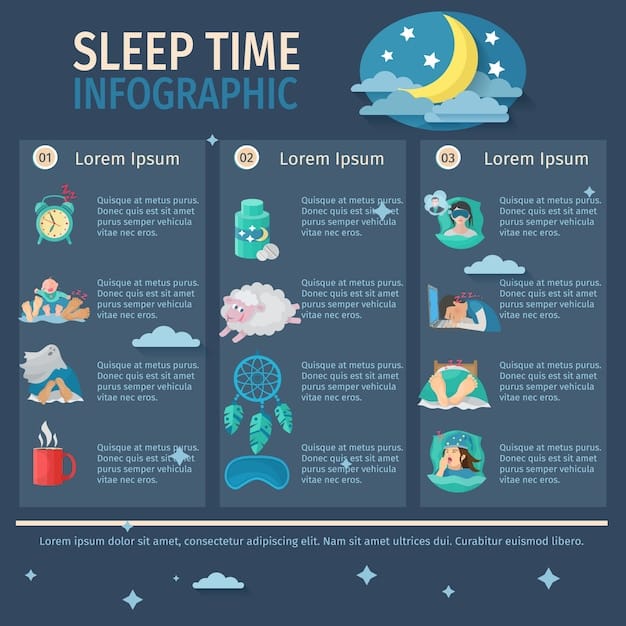Sleep Training Update: The Ferber Method’s Efficacy After 6 Months

The Ferber Method, a popular sleep training technique, aims to teach infants to self-soothe and fall asleep independently, but its long-term efficacy and potential impacts remain a topic of ongoing research and discussion, particularly concerning its effectiveness after six months.
Navigating the world of infant sleep can feel overwhelming. The Ferber Method, a structured approach to sleep training, often emerges as a potential solution. But does this method, known for its controlled crying approach, maintain its effectiveness beyond the six-month mark? Let’s delve into the data.
Understanding the Ferber Method
The Ferber Method, developed by Dr. Richard Ferber, revolves around teaching babies to self-soothe and fall asleep independently. This involves a gradual increase in the intervals of checking on the baby while they are in their crib, allowing them to learn to fall asleep on their own.
Core Principles of the Ferber Method
At the heart of the Ferber Method lies the concept of controlled crying, where parents allow their babies to cry for specified periods before offering brief comfort. The intervals between these checks gradually increase over several nights, encouraging the baby to develop self-soothing skills.
How the Ferber Method Differs from Other Sleep Training Approaches
Unlike co-sleeping or attachment parenting, the Ferber Method advocates for a more structured and independent sleep environment. It differs from “no-cry” sleep training methods by explicitly allowing for crying, albeit in a controlled and monitored manner.
- Gradual Increase in Intervals: The method emphasizes a systematic increase in the time between parental checks.
- Focus on Self-Soothing: It aims to help babies develop the ability to fall asleep independently.
- Consistency is Key: Adhering to a consistent bedtime routine is crucial for the method’s success.
Ultimately, the Ferber Method offers a structured approach to sleep training, focusing on gradual independence and self-soothing. Understanding its principles and how it differs from other methods is essential for parents considering this technique.
Efficacy of the Ferber Method: What the Research Says
Numerous studies have explored the effectiveness of the Ferber Method in improving infant sleep. These studies offer insights into its success rates, potential benefits, and any associated risks.
Overview of Key Studies on the Ferber Method
Research consistently demonstrates that the Ferber Method can significantly reduce the time it takes for babies to fall asleep and decrease night awakenings. These studies often involve tracking sleep patterns and parental reports.
Long-Term Effects on Infants: A Closer Look
Long-term studies exploring the effects of the Ferber Method on infant development have found no evidence of negative psychological or emotional consequences. These studies often follow children for several years to assess their well-being.

- Reduced Sleep Onset Latency: Studies show a significant decrease in the time it takes for babies to fall asleep.
- Decreased Night Awakenings: Parents report fewer instances of babies waking up during the night.
- Improved Parental Well-Being: Better infant sleep often translates to improved parental sleep and overall well-being.
The Ferber Method has proven efficacy in improving infant sleep patterns. Research suggests that its benefits extend beyond sleep duration, positively impacting parental well-being and without causing long-term harm to the child.
Ferber Method After 6 Months: Does It Still Work?
While the Ferber Method is often introduced earlier, its efficacy after six months remains a relevant question for many parents. As babies develop, their sleep patterns and needs evolve, potentially influencing the method’s success.
Adaptations for Older Infants
Adjusting the Ferber Method for older infants may involve modifying the initial intervals and considering the child’s developmental stage. For instance, increased separation anxiety may necessitate a more gradual approach.
Factors Influencing Success After 6 Months
Several factors can influence the Ferber Method’s success after six months, including the baby’s temperament, any underlying medical conditions, and the consistency of the implementation. Parental commitment and adherence to the method are also crucial.

- Temperament: Some babies are more adaptable to sleep training than others.
- Medical Conditions: Underlying health issues can disrupt sleep patterns.
- Consistency: Maintaining a consistent routine is vital for success.
The Ferber Method can still be effective after six months, provided that parents adapt the approach to suit their baby’s developmental stage and individual needs. Consistency and addressing potential underlying issues are key to achieving success.
Step-by-Step Guide to Implementing the Ferber Method
Implementing the Ferber Method involves a structured approach with specific steps to follow. Understanding these steps and adhering to them consistently is crucial for the method’s success.
Establishing a Consistent Bedtime Routine
A consistent bedtime routine signals to the baby that it is time to sleep. This routine should be calming and predictable, incorporating activities like a warm bath, reading a book, and singing a lullaby.
The Gradual Interval Approach
The core of the Ferber Method involves gradually increasing the intervals between checks on the baby. The initial intervals are shorter, gradually extending over several nights to encourage self-soothing.
Troubleshooting Common Challenges
Parents may encounter challenges such as increased crying, resistance to the routine, or setbacks due to illness or travel. Addressing these challenges with patience and consistency is essential.
- Warm Bath: A relaxing bath can help prepare the baby for sleep.
- Reading a Book: Reading aloud creates a calming atmosphere.
- Singing a Lullaby: Soothing songs can help the baby drift off to sleep.
Implementing the Ferber Method requires a structured approach that starts with establishing a consistent bedtime routine and gradually increasing the intervals between checks. Troubleshooting challenges with patience and consistency is key to success.
Potential Benefits and Drawbacks of the Ferber Method
Like any sleep training method, the Ferber Method comes with potential benefits and drawbacks. Understanding these factors is crucial for parents to make informed decisions.
Benefits: Improved Sleep for Infants and Parents
The primary benefit of the Ferber Method is improved sleep for both infants and parents. Better sleep can lead to enhanced mood, cognitive function, and overall well-being.
Drawbacks: Emotional Considerations and Potential Stress
The controlled crying aspect of the Ferber Method can be emotionally challenging for parents. Some parents may feel uncomfortable allowing their baby to cry, even for short periods.
Addressing Parental Concerns and Misconceptions
Many misconceptions surround the Ferber Method, often focusing on the emotional impact of controlled crying. Addressing these concerns with factual information and support can help parents make confident choices.
- Enhanced Mood: Improved sleep can lead to a better mood for both infants and parents.
- Cognitive Function: Adequate sleep supports cognitive development and function.
- Overall Well-Being: Better sleep contributes to overall health and well-being.
The Ferber Method offers potential benefits such as improved sleep for infants and parents, but it also presents drawbacks like emotional considerations and potential stress. Addressing concerns and misconceptions with factual information is vital for informed decision-making.
Alternatives to the Ferber Method
If the Ferber Method doesn’t feel like the right fit, several alternative sleep training approaches offer different strategies for improving infant sleep. Exploring these alternatives can help parents find a method that aligns with their values and parenting style.
Gentle Sleep Training Methods
Gentle sleep training methods focus on gradual changes and minimal crying. These approaches often involve staying in the room with the baby until they fall asleep, slowly reducing parental presence over time.
Attachment Parenting Approaches
Attachment parenting emphasizes responsiveness and close physical contact. Co-sleeping and frequent nighttime feedings are common practices in this approach.
Choosing the Right Approach for Your Family
The best sleep training method depends on individual factors, including the baby’s temperament, parental preferences, and family dynamics. Considering these factors can help parents make the right choice.
- Gradual Changes: Gentle methods focus on making gradual changes to sleep habits.
- Minimal Crying: These approaches aim to minimize crying and distress.
- Responsiveness: Attachment parenting emphasizes responding quickly to the baby’s needs.
Alternative sleep training methods, such as gentle approaches and attachment parenting, offer different strategies for improving infant sleep. Choosing the right approach depends on individual factors and parental preferences.
| Key Point | Brief Description |
|---|---|
| 👶 Self-Soothing | Ferber Method teaches infants to fall asleep independently. |
| ⏱️ Gradual Intervals | Increases time between checks to encourage self-soothing. |
| 📊 Research-Backed | Studies show effectiveness in reducing sleep onset latency and night awakenings. |
| 🌱 Adaptability | Method can be adjusted for older infants and individual needs. |
Is the Ferber Method safe?
▼
Research indicates the Ferber Method is safe and does not cause long-term harm when implemented correctly. Always consult your pediatrician.
When should I start sleep training?
▼
Most experts recommend starting sleep training around 4-6 months of age, but it varies per child. Consult your pediatrician for personalized advice.
How long does the Ferber Method take to work?
▼
Typically, you may see noticeable improvements within 3-7 days with consistent implementation. Results can vary depending on the child.
What if my baby gets sick during sleep training?
▼





